The mosaics in the naves date back to a later period than those in the presbytery. In the two side
aisles
, the
opus sectile
decoration of the floor continues in the lower order of the walls. A ribbon with a stylised palmette decoration of Islamic origin, also present in the
Monreale Cathedral
, forms a frame dividing the marble facing of the walls from the Byzantine mosaics, from the upper order of the naves,which retrace the stories of
St. Peter and St. Paul
.
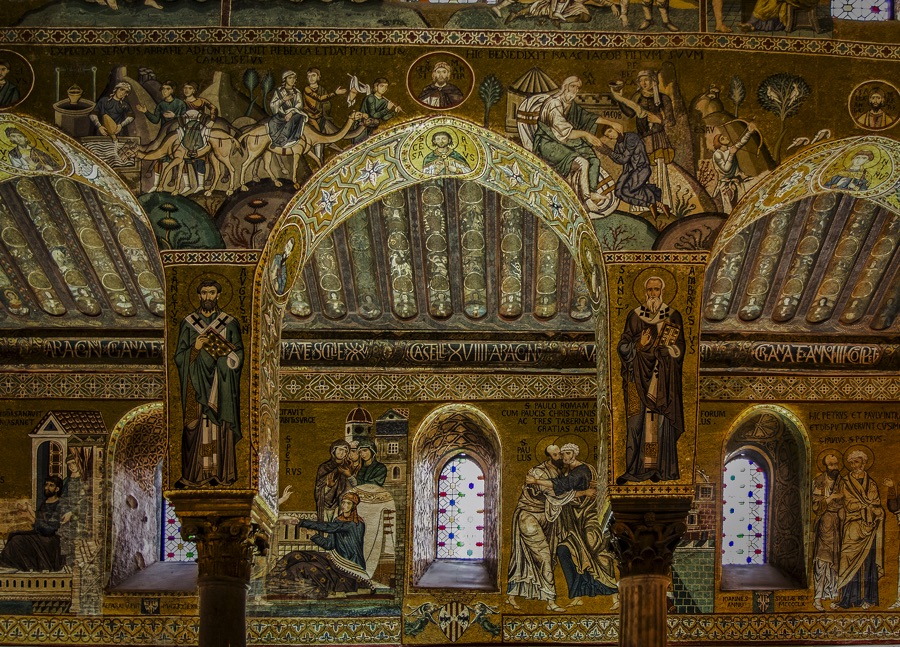 The representations, taken from the Acts of the Apostles, show the stories of Peter and some episodes of Paul in the north aisle, then to the left of the altar.
The representations, taken from the Acts of the Apostles, show the stories of Peter and some episodes of Paul in the north aisle, then to the left of the altar. 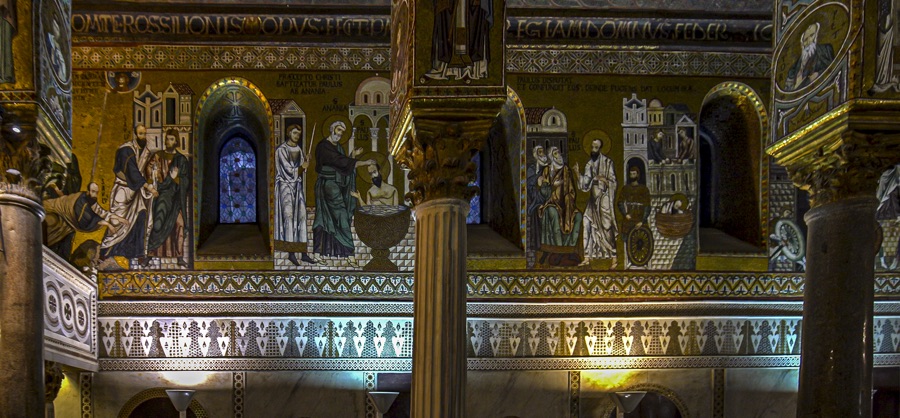 In the south aisle,
In the south aisle,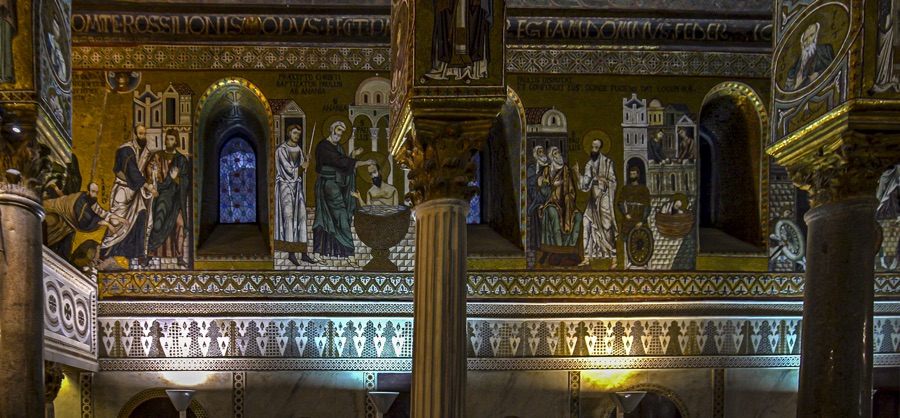 to the right of the altar, there are depictions of Peter’s escape from prison and episodes from the life of St Paul. In the nave, the stories of the
Genesis
to the right of the altar, there are depictions of Peter’s escape from prison and episodes from the life of St Paul. In the nave, the stories of the
Genesis
are illustrated, divided on two levels.
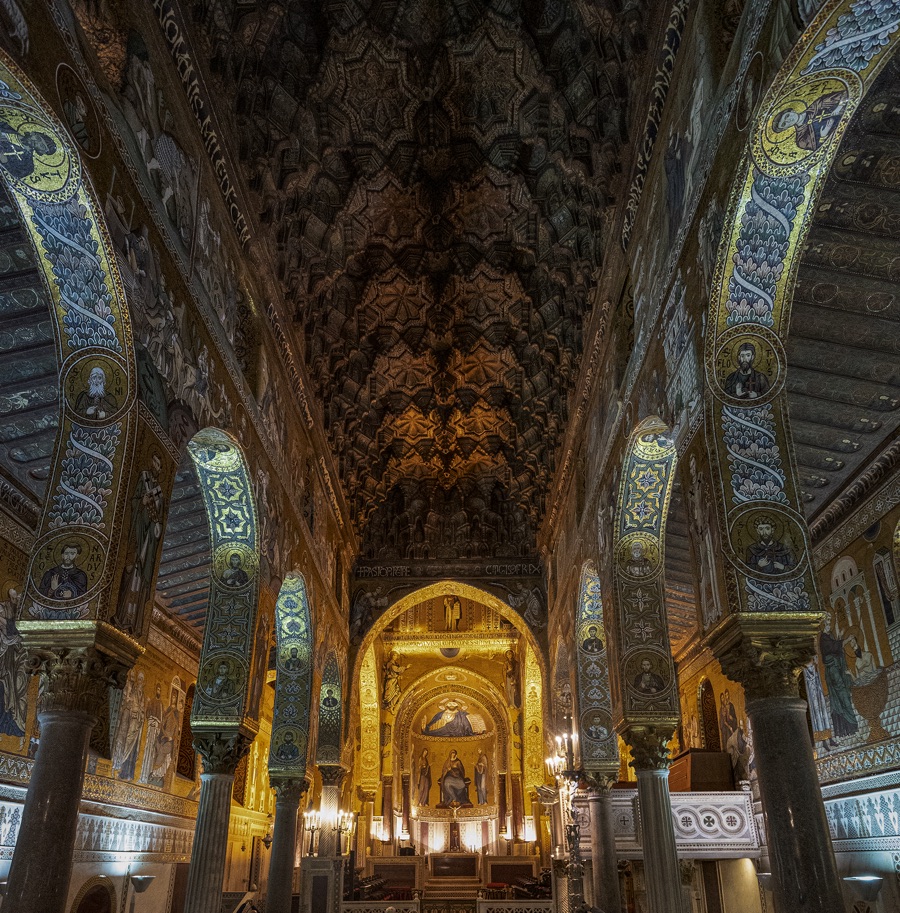 The scenes include: the Creation, Original Sin, the Great Flood, the
stories of Abraham
The scenes include: the Creation, Original Sin, the Great Flood, the
stories of Abraham
, the
stories of Isaac
, and the
stories of Jacob
. The
royal throne
, the symbol of temporal power, is located on the western wall, in the counter-façade.
In the upper part, there is a mosaic with a majestic depiction of
Christ enthroned, between Saints Peter and Paul
, with the archangels Michael and Gabriel above.
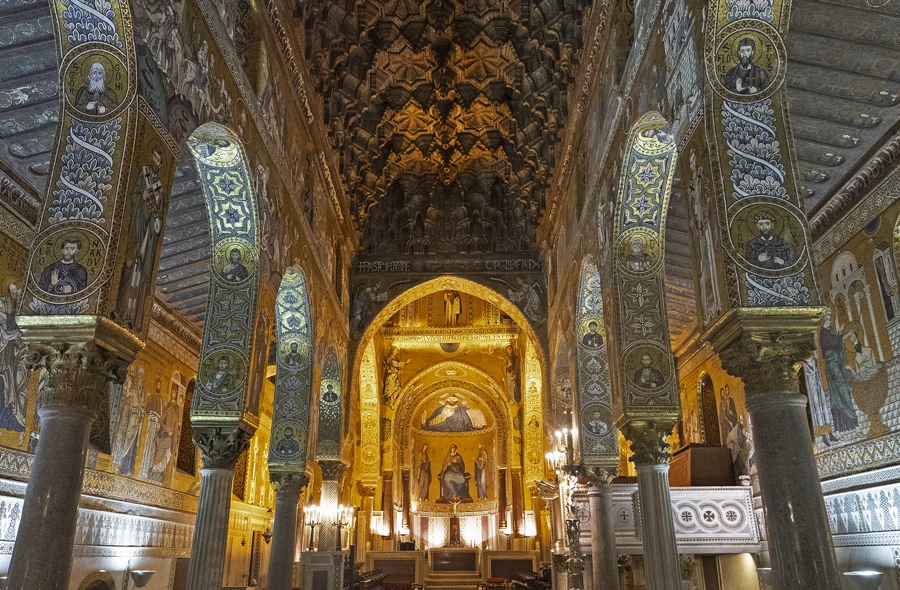 The Christ Pantocrator in the Aula Regia is in dialogue with the other two representations in the apse and the dome of the Sanctuary. The juxtaposition of the two iconographies creates a division between the area dedicated to divine worship and the one referring to the King.
The Christ Pantocrator in the Aula Regia is in dialogue with the other two representations in the apse and the dome of the Sanctuary. The juxtaposition of the two iconographies creates a division between the area dedicated to divine worship and the one referring to the King.
 On either side of the spire of the royal throne, in symmetrical, mirrored tondos, are two lions, the emblem of the Norman kingdom, surrounded by an intertwining of floral motifs.
On either side of the spire of the royal throne, in symmetrical, mirrored tondos, are two lions, the emblem of the Norman kingdom, surrounded by an intertwining of floral motifs.